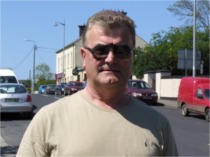|
|
Beattie welcomes placename
database
09.10.08
by Damian Dowds, Inishowen Independent
ANYONE who ever wondered how townlands and parishes
in Inishowen got their names need wonder no more.
A new website,
www.logainm.ie , launched last week reveals all.
The website provides the official Irish language
names of almost 100,000 towns, streets and post
offices throughout the country.
“It’s a very interesting development and long
overdue,” said local historian Seán Beattie. “It
should act as the definitive guide, although the
origin of placenames is very complex.” |
 |
Take Moville for
example – Bun an Phobail in the database. “The form
refers to the cluster of houses at the foot of the
bridge, but other scholars such as John O’Donovan,
John Colgan and PW Joyce called it Magh-Bile, which
Joyce translated as ‘plain of the ancient tree’,”
Beattie continued. “So the debate on some townlands
and placenames is open.” |
Visitors to the site
can also play sound files of the pronunciation of
placenames in Inishowen and the rest Donegal, while
many of the placenames on
www.logainm.ie
are accompanied by scanned archival records from the
Placenames Branch.
These handwritten records provide fascinating
reading. Using them, one will find how the townland
of Arderayman recorded in 1609 evolved over the
years to become known as Ardaravan, and how Culdaff
was first recorded as Coldoch in 1348.
One entry on Clonmany dating from the mid-1800s
says: “the name Cluain Maine is employed exclusively
to designate either the graveyard or the parish.
Among Irish speakers, the modern village of Clonmany
is called An Coirneal (‘the Corner’) and in the
middle of the 1700s the village was also known as
Gaddyduff.”
“The material on the database will be added to in
due course by the team working on the project,”
Beattie concluded. “They’re all very competent
authorities on placenames and they’ll have a
difficult job in a small number of cases.” |
|

